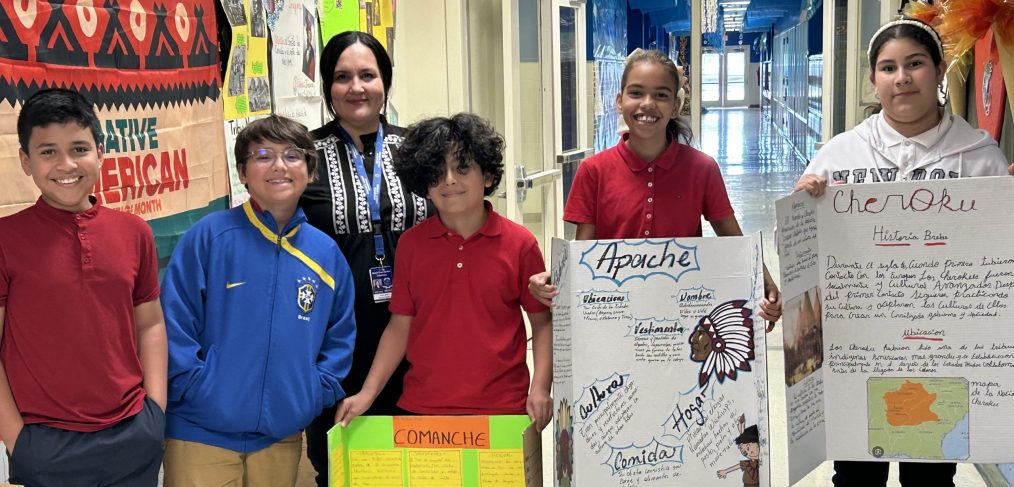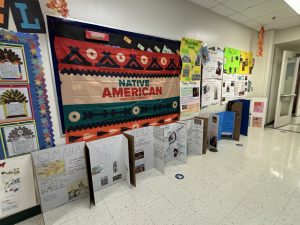
Learning about Native American history
Fifth graders in Vimari Khiat’s class at Ronald E. McNair Elementary School couldn’t help talk over each other in their eagerness to share what they had just learned about Native American history. And that excitement is just what Khiat was looking for when she designed the projects for her class to learn history and commemorate Native American History Month.
“We usually celebrate Hispanic Heritage Month and African American History Month, so why not Native American Heritage Month?” said Khiat, a bilingual teacher who is originally from Puerto Rico and is 12% Taino, the native people of the Caribbean islands. “As Hispanics we have a great amount of Native American in our DNA.”
The students had also learned about Native Americans at the beginning of the school year in social studies and are currently working on Unit 3 in Amplify, which is related to the First American Civilizations, she said. They learned not just about the native peoples of North America but also the native civilizations of Central and South America.
Khiat—who has been a teacher for 25 years, 14 of those in Dallas ISD—assigned each student a different Native American tribe, and they did research about the main facts of each, such as location, culture, housing, and foods. Then, they created a posterboard reflecting that information. Finally, they did an oral presentation to their classmates.
“I think it was important for my students to learn the history and culture of the different Native Americans tribes,” she said. “It was important not only because it is part of our reading/social studies curriculum, but it is part of our ancestry. It is celebrating diversity and promoting cultural awareness among children.”
 The students certainly gained cultural awareness about the similarities that united all native people across the Americas, such as they all had agriculture, government, languages, culture, religion and settlements long before Europeans settled here, said Roberth.
The students certainly gained cultural awareness about the similarities that united all native people across the Americas, such as they all had agriculture, government, languages, culture, religion and settlements long before Europeans settled here, said Roberth.
One of the students, Carla R., added, “They were mostly peaceful and their religions were similar even though their gods had different names.. They didn’t fight a lot like you see in the movies.”
Khiat always wanted to be a teacher because she loves children and learning, and seeing her students find joy in learning is rewarding.
“My best childhood memories are at school,” she said. “I’m a bilingual teacher because I love learning other languages and cultures. I also love to teach reading and working with children. I understand the struggle of learning a second language firsthand and I want to help others to become bilingual as well.”



